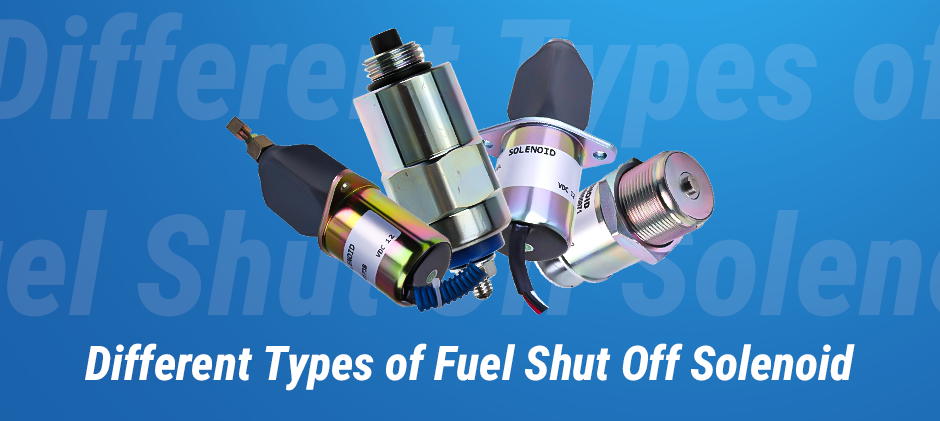hey From our communication with clients, FridayParts finds that many equipment owners and operators face challenges in identifying and testing a faulty fuel shut-off solenoid. This part seems small but it is actually a crucial component that plays a key role in controlling fuel flow and ensuring your machinery operates efficiently. That’s why we’re bringing up this topic – to help you recognize the symptoms of a bad fuel shut-off solenoid and guide you through the process of how to test a fuel shut off solenoid effectively.
What Is a Fuel Shut off Solenoid?
A fuel shut off solenoid is an electromechanical device used in diesel engines to control the flow of fuel to the engine. In heavy equipment like excavators, loaders, or tractors, it serves as a safety and control mechanism to start or stop the engine by managing fuel delivery. The main role it plays includes engine shutdown, fuel run-on prevention, Mechanism Safety, and fuel leak prevention.
How Do I Know If my fuel shut off solenoid is bad?
A failing fuel shut off solenoid can cause some serious issues in your machinery. Here are some common symptoms to watch for provided by FridayParts:
- Engine Fails to Start or Shut Off: As the shut off solenoid is there for flow control, If the solenoid is stuck in the closed or open position, it may prevent fuel flow or fail to cut off fuel when needed.
- Engine Stalls Unexpectedly: Intermittent fuel supply caused by a faulty solenoid can cause the engine to stall during operation.
- Clicking Sound is Absent: A healthy solenoid usually produces a faint clicking sound when powered on. If you don’t hear this sound, the solenoid may not be engaging.
- Excessive Fuel Consumption: A malfunctioning solenoid may allow continuous fuel flow, leading to poor fuel efficiency.
- Burnt Smell or Electrical Issues: Overheating or damaged wiring can cause the solenoid to malfunction.
If you notice any of these symptoms as mentioned earlier, it is time to learn how to test a fuel shut off solenoid to confirm whether it needs replacement.

How to Test a Fuel Shut Off Solenoid?
Here’s a refined step-by-step guide on how to test a fuel shut off solenoid(taking a riding lawn mower as an example). I believe that by following these steps, you can diagnose any issues accurately.
- Gather the Necessary Tools:
- A 9-volt battery (minimum power source; remember to prepare a compatible battery for your equipment model).
- A 9-volt battery plug (can be sourced from an old clock or alarm radio).
- A vise or stable surface to hold the solenoid securely.
- Inspect the Solenoid Visually:
- Ensure there are no signs of physical damage, corrosion, or frayed wires.
- Check that the threaded end is clean and free from blockages.
- Connect the Battery Plug to the Your Battery:
- Attach the 9-volt battery plug to the battery terminals.
- Ensure the positive (red) and negative (black) wires are clearly identifiable.
- Secure the Solenoid in a Vise:
- Place the fuel shut-off solenoid securely in a vise to keep it stable during testing.
- Connect the Battery Wires to the Solenoid Prongs:
- Touch the positive wire to one prong and the negative wire to the other prong of the solenoid.
- Observe the solenoid plunger closely.
- Look for Movement in the Plunger:
- A functioning solenoid will show visible movement in the plunger when power is applied.
- If the plunger does not move, the solenoid may be faulty.
- Alternative Manual Test (If Applicable):
- If the plunger remains stuck, manually press it to see if it moves freely.
- If it feels jammed or stuck, the solenoid is likely defective.
- Troubleshoot Further If Necessary:
- If the solenoid fails the test, consider replacing it.
- As a temporary fix, you can cut and grind the plunger to keep it in the open position.
- Reassemble and Test the Equipment:
- Once the solenoid passes the test or is replaced, reinstall it on the carburetor.
- Start the engine to confirm proper fuel flow and function.
This method ensures a quick and reliable test using simple tools, helping you diagnose whether your fuel shut-off solenoid is in good working condition.
Fuel Shut Off Solenoid FAQs
Fuel Shut Off Solenoid vs Fuel Shut Off Valve: What Is the Difference?
They both control fuel flow, but differ in operation, control, and application. Solenoids are electrically operated and use a magnetic field to open or close the valve, allowing for fast response and remote control, making them ideal for modern engines and automated systems. In contrast, valves typically rely on manual or mechanical control, offering simplicity, reliability, and independence from electricity, making them suitable for older mechanical or emergency fuel shutoff scenarios. While solenoids excel in automated precision and fast response, valves offer a cost-effective, simple solution for basic fuel isolation needs.
Conclusion
You can not ignore a failing fuel shut-off solenoid. It could significantly disrupt your machinery’s performance and lead to costly downtime. By recognizing the common symptoms and conducting simple tests, you can quickly diagnose and address solenoid issues. At FridayParts, we offer high-quality replacement solenoids to keep your equipment running smoothly. Don’t let a small component cause big problems—inspect, test, and replace when necessary. Now that you know how to test a fuel shut off solenoid, you’re better equipped to handle potential issues and keep your machinery performing at its best!
